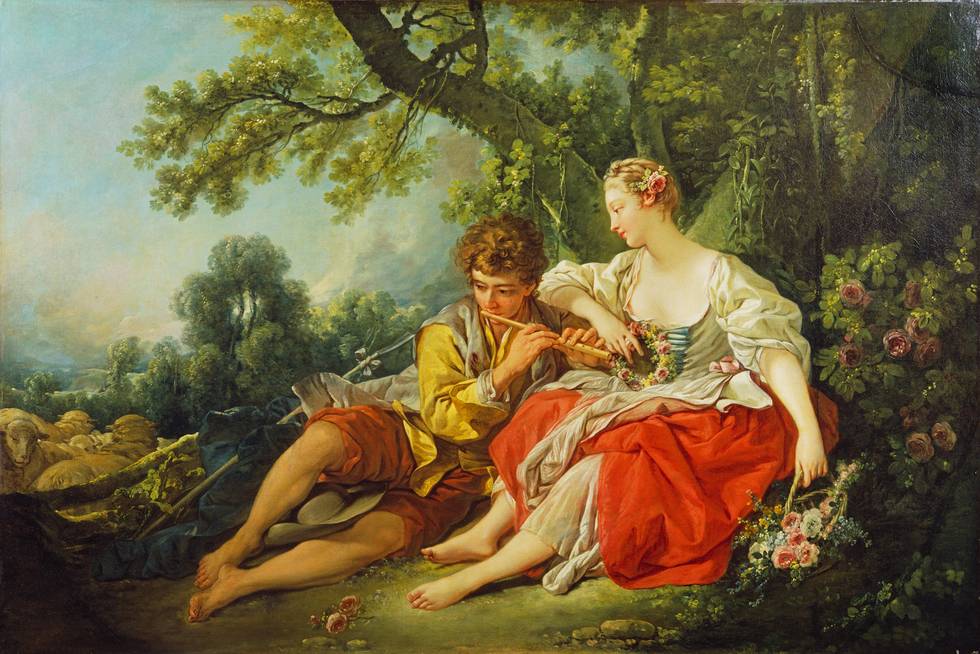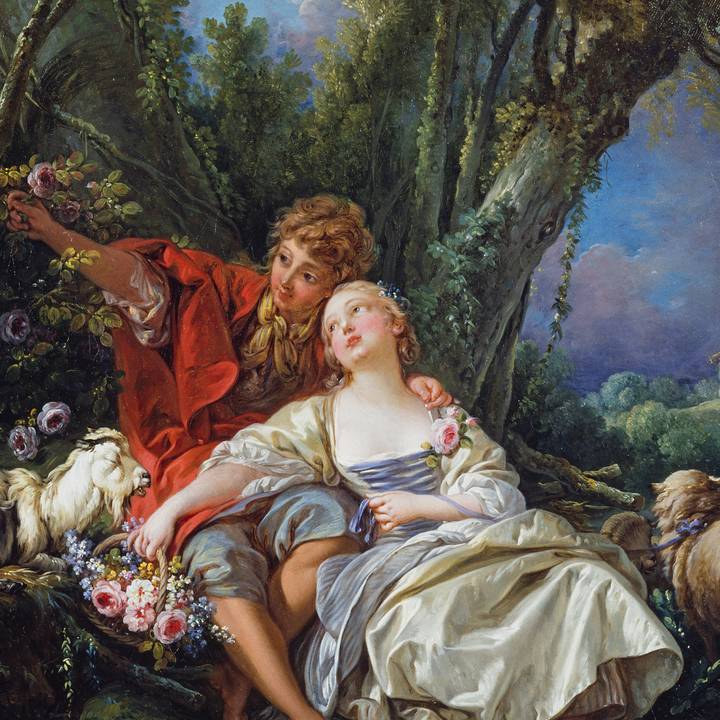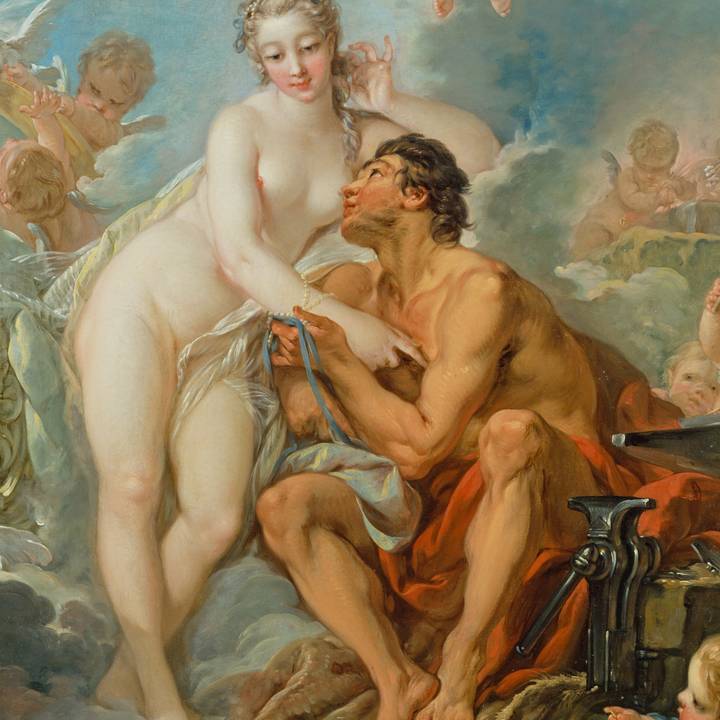Date: c. 1747-1750
Materials: Oil on canvas
Measurements: 94 x 142 cm
Inv. No: P399
This painting exemplifies Francois Boucher’s (1703-1770) pastoral style from the late 1740s, similar in theme to his Daphnis and Chloe. Set in an Arcadian landscape, a shepherd serenades a shepherdess on the flute, and she, in turn, is poised to reward his affection with a crown of flowers.
Their vibrant costumes and broad, expressive brushwork enhance the lively, romantic atmosphere.

Boucher frequently drew inspiration from the immensely popular pantomimes of Charles-Simon Favart (1710-1792), who adapted Arcadian themes for contemporary Parisian audiences.
As both a set designer and enthusiastic attendee at the opéra comique, Boucher was captivated by Favart’s musical dramas, which blended the Arcadian ideal and aristocratic sentimentality with rustic characters and scenes from popular theater.
This painting may depict Scene V from Favart’s Les Vendanges de Tempé (The Harvest in the Vale of Tempé), first staged in 1745. In this scene, a shepherd named Lisette plays the flute for his sweetheart. Alternatively, it could be more generally inspired by Favart’s style, reflecting Boucher’s immersion in his work at the opéra comique.
The painting was likely completed around 1747–1750, following the success of Les Vendanges de Tempé. Its irregularly shaped canvas hints that it may have originally been part of a larger decorative scheme.
The pastoral genre allowed Boucher to explore his favorite subject: the awakening of love. This theme aligns with the ideals of Pierre de Marivaux (1688-1763), who once wrote of his own work as an effort to “search the human heart for all the corners where love might hide.”
In an era marked more by intellectual pursuits than by poetry, Boucher was considered a rare poetic voice, capturing the romantic spirit of his age. Baillet de Saint-Julien’s description of Boucher’s pastoral paintings at the 1748 Salon conveys the fresh impact of his work on audiences unjaded by later clichés: “Can one describe his pastoral subject with more tenderness and naivety? It is a shepherd who teaches a young shepherdess to play the flute. What happy attitude? What noble simplicity?”
This praise highlights the originality and charm of Boucher’s vision, which was celebrated for its gentle, sincere portrayal of young love.
Text adapted from Hedley, J., Francois Boucher: Seductive Visions, London, 2004.



